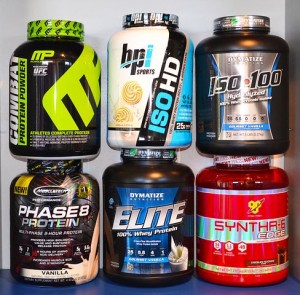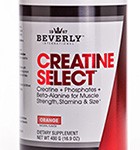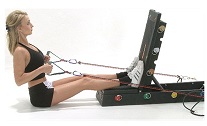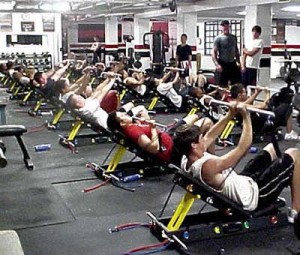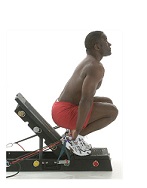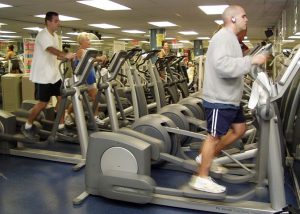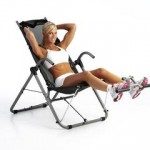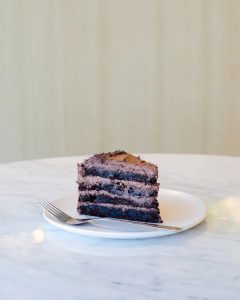This week, Targitfit is pleased to bring you an informative diet article by Carnivore Aurelius:

Source
The internet is rife with vitamin C remedies for the common cold, vitamin B concoctions to boost energy and high doses of vitamin D for bone health.
Yet vitamin A gets the cold shoulder. Think about it, when was the last time you saw a vitamin A shot at the gas station??? Exactly.
While Vitamin A isn’t exactly known as a sexy vitamin, it does, in fact, have superpowers:
- It rejuvenates your skin
- Protects cells against free radical damage
- Powers your immune system
- Supports vision
- Accelerates muscle gain
These are just some of the many benefits. Supposedly enough vitamin A can even give you X-Ray vision…I haven’t tested this out yet though.
Stay with me here as we dig into the nutrient powerhouse you’ve been ignoring, what it does and how to make sure you get enough.
A Primer on Vitamin A
Vitamin A is a term that encompasses a group of vitamin compounds including carotenoids and retinoids. Carotenoids are precursors of the active Vitamin A that your body needs and retinol is the active form. There are three forms of active retinoids in the body: retinal, retinol and retinoic acid.
As is always the case, when plants and animals have a different form of a nutrient, the animal form is always the one you need. It makes sense. Your eyes aren’t made of carrots. They’re made of the same building blocks that animals have in their eyes…
Foods high in carotenoids are most commonly fruits and vegetables with bright red and orange colors but also include some dark leafies. Some examples of foods high in carotenoids include:
- Sweet potato
- Pumpkin
- Carrots
- Butternut squash
- Kale
- Collard Greens
- Red palm oil
Humans and animals make retinoids (this is the active form of vitamin A, remember?) from some of the carotenoids. Active vitamin A is stored in the liver and in fat, making animal liver and animal fats the best sources.
Beef liver, for instance, is the best source of Vitamin A retinol in the world. Just 100g of beef liver contains over 15,000 IU of Vitamin A.
Interestingly, besides liver, foods that naturally contain the highest amounts of vitamin A are those that are meant to sustain young animals through development like milk and eggs. The highest natural sources of retinoids include:
- Liver
- Cod liver oil
- Butter
- Whole milk
- Egg yolks
Cereals and other grain products may be fortified with vitamin A but I’m obviously not promoting those as good sources. If that surprises you, check out my posts on saponins and lectins to learn more.
Carnivore is King
Plants do contribute to vitamin A status however, many factors impair our body’s ability to convert carotenoids into active vitamin A.
First things first, only about 10% of the over 500 carotenoids can be converted into active vitamin A.
Second, there are physiologic factors that play interference in our ability to convert, including:
- Certain health conditions like diabetes and celiac disease
- Age (infants and children)
- Low thyroid function
- Low fat intake
- Diarrhea
- Pancreatic dysfunction
- Fiber in the diet
- Parasites
- Nutrient deficiencies including protein, zinc, and iron
- Genetic variation (reduces ability to convert by up to 75%)
For many people, the conversion rate of beta-carotene to retinol is only 5%. For instance, this study shows that every 15 mcg of carotene in spinach is equivalent to 1 mcg of retinol .
Layer in genetic polymorphisms, low fat intake and gut issues and absorption rates may be even lower. It makes sense why there are so many health issues today, as this is one of the most important vitamins in the world.
As you can see, relying solely on plants to meet vitamin A needs is a problem for the majority of people.
So it makes sense to let mother nature take the guesswork out of it for you and incorporate animal sources to get what you need.
If you’re interested in maximizing your amount of vitamin A intake, the carnivore diet is the best diet in the world.
What Does Vitamin A Do?
Vitamin A has a wide range of benefits. It’s important to note that the benefits do not apply universally to both carotenoids and retinoids, they are separate compounds with different jobs. Here, I’ll discuss mostly the benefits of active vitamin A with some comments about carotenoids noted throughout.
1. Reproduction
Adequate vitamin A is required by both female and male reproductive cells for healthy reproduction. You heard correctly – if you want to procreate, both sperm and eggs rely on vitamin A. What could be more of a superpower than helping to create a human?
2. Healthy Pregnancy for Mom and Baby
From conception to birth, vitamin A is required for a healthy pregnancy. Starting from embryonic development, through the formation of the organs, development of healthy eyesight, and sound immune function, vitamin A is an essential nutrient to make sure physiologic systems are formed and healthy.
For mom, Vitamin A deficiency also increases maternal mortality in pregnant women. Vitamin A deficiency is of highest concern in the third trimester when both mom and baby need this essential nutrient.
3. Healthy Vision
Vitamin A deficiency is the leading cause of preventable blindness in children worldwide. According to the World Health Organization, this is a major health issue for at least half of the population of every single country on earth.
This supernutrient is required for eye development, proper functioning of the retina and protection of the surface of the eye. Vitamin A is a structural component of rhodopsin, the pigment within the cells of the retina that allow us to see colors and dim light.
So next time someone tells you carrots are good for vision, you can inform them that Carrots are a wanna-be beef liver.
4. Immune Function
Vitamin C and zinc aren’t the only superstars when it comes to immune function. In fact, vitamin A was originally nicknamed the “anti-infective” vitamin almost a century ago because of its importance in normal immune functioning.
The body’s barrier tissues including the skin and linings of the digestive tract and airways rely on vitamin A. Vitamin A is required for the creation of the cells that make up those tissues as well as the mucous they produce. These tissues are the first line of defense for keeping out harmful substances like some types of bacteria and viruses.
The organs of the immune system need a constant supply of vitamin A to produce cells that help to fight off infections in the body. Research shows that vitamin A reduces infection and death of many serious illnesses including tuberculosis, pneumonia, measles, and malaria.
Whenever I’m getting sick, I load up on beef liver and my cold virus vanishes — maybe because it can’t stand the smell of the liver?
5. Clear, Vibrant Skin
Vitamin A helps maintain healthy, vibrant skin through a number of ways including:
- Production of new skin cells
- Promoting collagen production
- Preventing sun damage
- Supports oil glands around hair follicles
Adequate vitamin A helps maintain moisturized, supple skin. In the case of acne, wrinkles or scarring, vitamin A-based creams or serums may be recommended to increase cell turnover and promote collagen.
Eating vitamin A will transform your skin. How do you think mine looks like porcelain?
6. Gene Regulation
Genes aren’t just those things created by Levi’s.
They’re the code that regulates all cellular function.
Most people don’t know that your diet can directly impact your genetic material. Your genes aren’t carved into stone and can actually change over time. Actually, there is a whole field of study dedicated to this phenomenon known as nutrigenomics. Vitamin A is a great example of nature and nurture both impacting how the body functions.
Vitamin A regulates the response of over 500 different genes. Genes are parts of your DNA that are passed down to you from your parents. They act as instructions and govern how proteins build and regulate different functions of the body.
7. Healthy Blood
Vitamin A is vital for the physiologic processes of cell differentiation and commitment. Sounds complicated right? Not really, this simply refers to the change in stem cells to cells that have a particular function in the body.
Lab studies done outside of the body suggest vitamin A may be required to turn undifferentiated cells known as stem cells into red blood cells. Vitamin A also helps mobilize and transport iron from various tissues in the body. As such, deficiency of vitamin A contributes to the development of anemia.
8. Strong Bones
Vitamin D and calcium have gotten most of the attention for strong bones but vitamin A plays a critical role as well. Strong healthy bones rely on bone cells called osteoclasts and osteoblasts for remodeling, the process of building and strengthening bones in response to stress. This delicate balance of breakdown and rebuilding requires vitamin A.
How much is required for good bone health? The jury is still out. Some observational studies have shown that too much or too little vitamin A increases fracture risk but others have shown no association, or reduced fracture risk.
Because bone health depends on both vitamin A and vitamin D, including food sources that contain both nutrients such as cod liver oil, beef liver, and eggs are a good idea.
9. Reduces Inflammation
Many carotenoids act as antioxidants, protecting cells from free radical damage and reducing inflammation. Vitamin A’s role in immune functioning and cell turnover also contributes to an overall anti-inflammatory effect.
Acute inflammation plays an important role in health but chronic unchecked inflammation is known to play a role in the development of a number of chronic diseases like heart disease, arthritis, and dementia.
10. Accelerates Muscle Gain
Read through any bodybuilding magazine….You’ll see countless ads for whey protein and men with traps so big they can barely put on a shirt.
But they’re missing one of the most crucial things. Vitamin A.
Vitamin A increases muscle gain via several mechanisms.
It’s critical to the production of testosterone. Rat studies show that greater concentrations of Vitamin A in testes increases testosterone secretion .
Vitamin A also increases transferrin production which is responsible for a variety of growth factors, like IGF-binding protein 4.
Lastly, the incorporation and utilization of protein requires vitamin A. Rats fed a diet low in vitamin A synthesized protein at a lower rate
It’s true what they say — beef liver is the new steroids (fine, I’m the only one saying it).
Am I Getting Enough Vitamin A? Probably not.
So how much vitamin A is enough? This isn’t as easy a question to answer as you might think. There is some discrepancy over current vitamin A recommendations.
The Recommended Dietary Allowance (RDA) for vitamin A varies based on age, gender, and reproductive status.

The RDA for Vitamin A is far too low. But even then, 25% of American’s don’t even consume half the required amount. This makes sense. Vitamin A is largely found in foods like organ meats. And I don’t think I’ve ever seen beef liver on the menu at Chipotle…
Surveys of the US population show that about half do not meet need the Estimated Average Requirement (EAR) of vitamin A. Compared to the RDA, the EAR is the amount of a particular nutrient that is estimated to meet the requirement for half the healthy individuals within a population.
Some experts contend that dietary inadequacies are more widespread yet go undocumented due to current recommendations being too low and shortcomings with using serum vitamin A as the primary marker for deficiency.
Serum vitamin A is tightly controlled to maintain homeostasis and will not start to fall until liver stores are too low. To get a better sense of total vitamin A status it is recommended serum vitamin A be combined with another test like retinol binding protein (RBP).
In addition, public health messaging has vilified vitamin A during pregnancy due to a study that showed that very high doses of vitamin A early in pregnancy are associated with negative pregnancy outcomes such as birth defects.
As a result, and out of an overabundance of caution, many prenatal vitamin formulations changed to limit active vitamin A content. And, as we’ve established, inadequate vitamin A intake during pregnancy is bad for both the baby and the mother. Just because too much is harmful doesn’t mean the vitamin should be avoided altogether. As the old adage goes “the dose makes the poison.”
Researcher Weston A. Price reviewed diets of healthy indigenous populations and found that intake among these largely disease-free groups was around 50,000 IU per day. This is about 10x the current RDA recommendation.
This threshold can be met by consuming a tablespoon of cod liver daily, organ meat from pastured animals a few times a week and regular consumption of high-fat animal products like butter and cream (again, from pastured animals).
Other experts that also look to ancestral dietary patterns for clues on optimizing nutrition for good health recommend aiming for 3-10,000 IU’s per day. To accomplish this you’d need to eat at least one of the following foods daily:
- 4 oz of liver per week
- 3 whole eggs per day
- 1 tablespoon of cod liver oil per day
- Liberal use of grass fed butter and red palm oil
- 3 servings of pasture raised full fat milk daily
Vitamin A Toxicity
It’s true. Too much vitamin A can indeed induce toxicity. But reports have only been seen in the case of people taking synthetic vitamin A supplements for months at a time. Usually these subjects are taking close to 100,000 IU a day for several months…which would be equivalent to eating over 1lb of beef liver a day for months.
Studies also show that Vitamin D increases the toxicity threshold. This study shows that in a typical 160lb male, vitamin D supplementation increases the threshold to 200,000 IU a day .
Please save some liver for the rest of us and don’t eat that much…
For most people, too little Vitamin A is a much bigger problem than too much.
The Take Home
Regardless of which side of the vitamin A debate you sit on, the evidence is clear that most people need to do better at reaching even conservative adequate levels in the diet.
While plant foods do contribute to vitamin A status, there are a number of factors that impair their conversion to active vitamin A (the source of our body’s need). Therefore, the best sources for vitamin A are from animals.
To get what you need, make sure to include some combination of organ meats, cod liver oil, grass fed butter and cream and whole eggs into your regular diet.
This article was originally published at www.carnivoreaurelius.com.
Carnivore Aurelius is a nutrition and biochemistry expert who’s studied for over 5 years. He used the carnivore diet to cure IBS, rheumatoid arthritis and his acne. He’s passionate about distilling complex nutritional information down to actionable advice.

